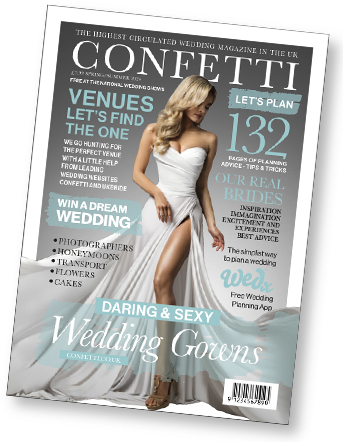One of the most important parts of a wedding is the giving of rings, which are often seen as symbols of eternal love and commitment. The tradition is believed by some to stretch back to Ancient Egypt.
Featured above: ROX
In Egypt, rings started out as bound or braided sedges, rushes and reeds, and over the centuries they have definitely altered through different cultures. Bands of gold are very popular these days, but there is also silver, platinum, titanium, and even meteor rock! There are no limits really. You can be creative about it too—some couples make their own, making the giving of the rings even more special and personal. Just make sure the chosen material is durable. Even the Egyptians had to swap their rings for other materials when they started deteriorating. You don’t have to dive for the largest gem or the shiniest metal you see either, as with all the beautiful materials and styles in the world you can, with a bit of thought, make something timeless and unique without paying an arm and a leg.
You can shop for rings together, or in secret so you can surprise your partner. For the latter, one of the biggest worries for ring-buyers is not knowing the size needed. Ways around this include:
- Taking the ring measurement way, way before you plan to propose.
- Have a close friend of your partner take the measurement for you.
- Borrow a ring your partner already has and get the size from that.
Browse for beautiful wedding flowers here
If you have a special time and date arranged, bear in mind that making a ring takes time—even for the customisation of an existing design. Store and jeweller waiting times will vary.
Traditionally, wedding rings are worn on the fourth finger of the left hand because, historically, people believed a vein ran from this finger directly to the heart. But it varies by means of preference or even things like culture and religion. Wedding and engagement rings may or may not be worn together on the same finger—it’s very much a matter of personal taste. Don’t feel pressured by convention.
Whether your significant other has already said “yes” to you or you’re still preparing to ask the all-important question, you might be asking yourself, “Should I get a matching ring?” (It doesn’t even have to be a ring—pendants or charms can work just as well.) Of course you don’t have to. You probably each have different tastes and want a ring that suits you. Why not just get rings that have similar designs or colours, therefore embracing your individuality and mirroring your partner?
Not everyone gets engaged, so it really is up to you if you decide to buy an engagement ring on top of the wedding ring (you don’t have to be traditional with engagement rings either!). Here you may run into money trouble—with both wedding and engagement rings you will be buying four rings all together. Be sensible with your spending—perhaps give yourself a budget. But there is a lot of value in an engagement, as it’s almost a middle ground of excitement and anticipation and only one step away from the marriage itself.
So, to conclude, it’s primarily up to you, your taste and your partner’s taste. In the end you probably know what’s best in choosing the right rings. Trust your own judgement.




